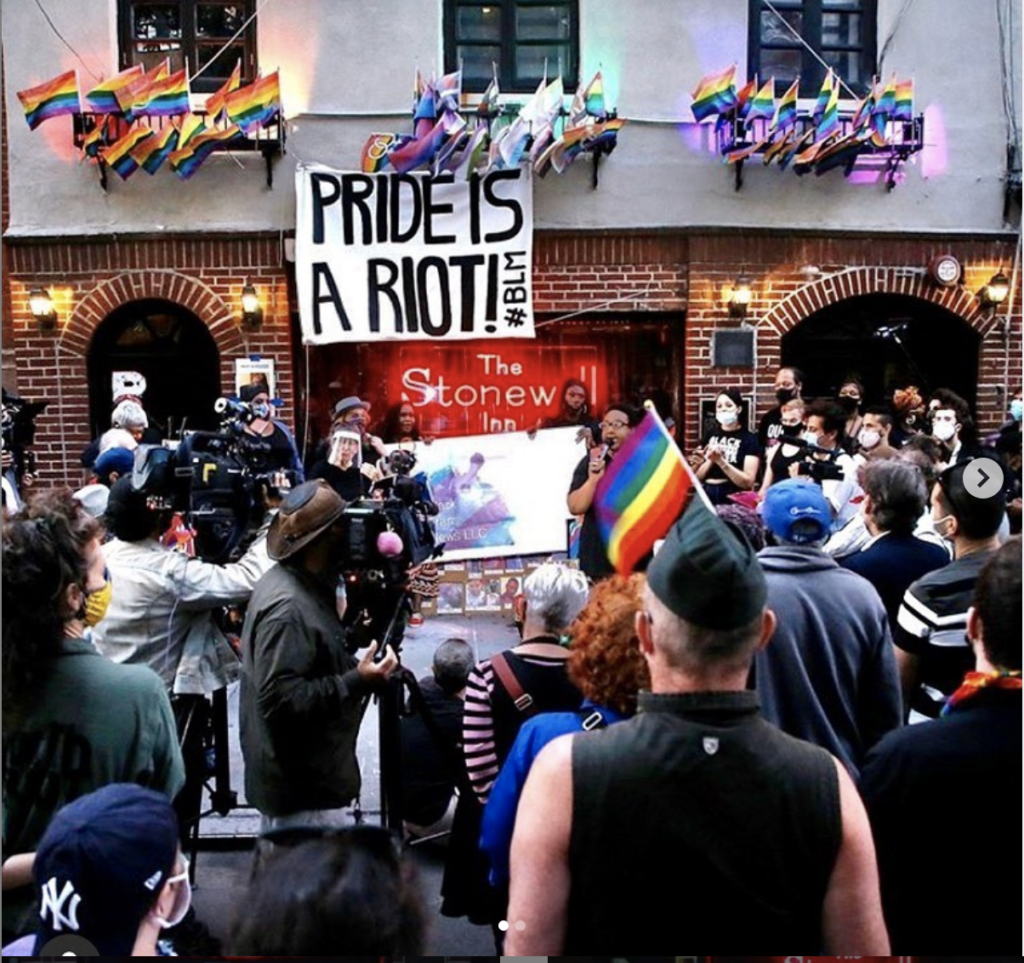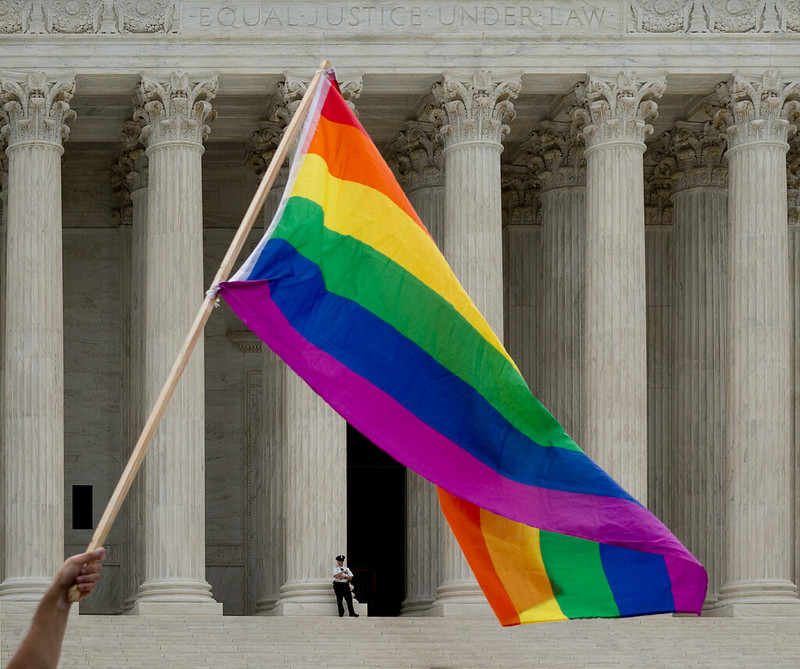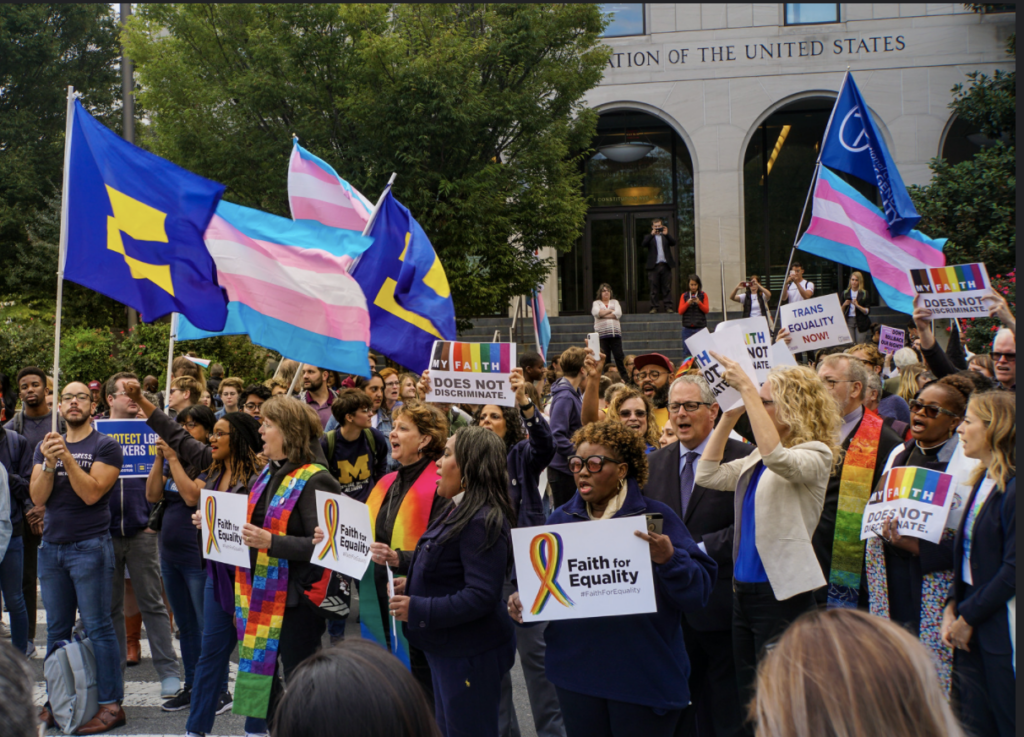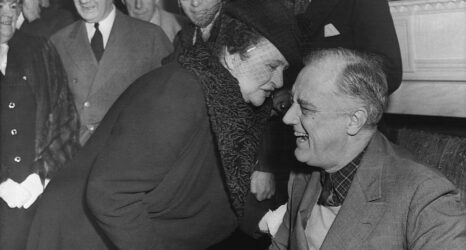From Stonewall to the Supreme Court, Pride month has long been a time for celebration, activism and progress in the LGBTQ community.
Here are eight monumental events in LGBTQ history that took place during Pride month and brought us to where we are now.
1969: The Stonewall Riots
The Stonewall Riots are credited with sparking the modern LGBTQ rights movement. But at the time, it was simply an outpouring of bottled-up anger towards the police.

The Stonewall Inn was one of the most popular places for gay men, lesbians, drag queens and trans women to gather in New York City—perhaps because it was one of the only places LGBTQ people were able to dance.
On June 28, 1969, police raided the Inn and arrested several people for wearing clothes that didn’t match their sex assigned at birth. One butch lesbian resisted arrest and was hit with a baton. A huge crowd had gathered to watch, and they began yelling and throwing anything they could find at the cops, fighting back en masse for the first time.
For the next five days, riots raged every night on Christopher Street, where most of the gay-friendly bars in the city were located. Trans activists Marsha P. Johnson and Sylvia Rivera were among those who fought back against the police, combating years of brutality and marginalization. It was a turning point that launched countless LGBTQ groups and activists, and thrust LGBTQ rights into the spotlight.
1970: Christopher Street Liberation Day
To commemorate the first anniversary of the Stonewall Riots, the Eastern Regional Conference of Homophile Organizations moved their annual march to New York City. What followed is widely considered the first gay pride parade.
On June 28, 1970, protesters began in front of the Stonewall Inn and marched 51 blocks to Central Park. There, they hosted a gay “Be-In,” inspired by earlier civil rights demonstrations. The Christopher Street Liberation Day march spawned several international marches, and parallel demonstrations took place in San Francisco, Chicago and Los Angeles.
More than two thousand people participated in the march, drawing mainstream visibility to what had long been an underground movement. In the five decades since activists marched on Christopher Street, cities around the world have held annual public demonstrations advocating for LGBTQ liberation, visibility, and pride.
1978: The Birth of the Rainbow Flag
In the late 1970s, Harvey Milk, the first openly gay politician in a major city, decided that the community needed a symbol to rally around. The previous symbol, which is still sometimes used today, was the pink triangle that marked gay men in Nazi Germany. Gay men had reclaimed it as symbol of activism and power—but Milk wanted something more joyous to celebrate gay pride. He challenged his friend Gilbert Baker to come up with something new.
Baker decided to create a flag, which he saw as a way to be extremely visible in a world trying to ignore his existence. The original rainbow flag had eight colors, each with a different meaning: hot pink for sex, red for life, orange for healing, yellow for sunlight, green for nature, turquoise for art, indigo for harmony and violet for spirit.
Artist and gay rights activist Gilbert Baker created a mile-long rainbow pride flag to be stretched across NYC on the 25th anniversary of the Stonewall Riots in June, 1994. He was also the designer of the pride flag. (Photo by Eric Miller)🌈✨ pic.twitter.com/yqF1mSrIQg
— Lost In History (@historyandfacts) June 29, 2020
The first rainbow flag was hand-sewn by Baker and was 60 feet long. But when Baker started mass-producing his flag for San Francisco’s Pride march, he changed it slightly to save on dye costs—resulting in the iconic six-striped flag we know today.
1999: Clinton Declares June “Gay and Lesbian Pride Month”
On June 11, 1999, former President Bill Clinton issued a proclamation officially designating June as “Gay and Lesbian Pride Month” for the first time—celebrating the courage of lesbian and gay activists and encouraging Americans to “remember throughout the year the gay and lesbian Americans whose many and varied contributions have enriched our national life.”
In his speech, President Clinton extolled diversity as an American value and advocated for acceptance of gays and lesbians. He outlined several initiatives his administration had undertaken to combat anti-gay discrimination, but emphasized that Americans must also alter their personal views on gay people. “We cannot achieve true tolerance merely through legislation,” he wrote. “We must change hearts and minds as well.”

2003: Lawrence v. Texas
In the early 1900s, sodomy laws prohibited any “unnatural” sexual activity, meaning things like sex outside of marriage, sexual assault, sex with animals and public sex. But in the 1970’s, sodomy laws were explicitly rewritten or subtly reinterpreted to focus on criminalizing gay sex—primarily sex between cis men. These laws were then used to justify firing LGBTQ people, prohibiting them from having children, and banning them from public spaces.
Not until 2003, in Lawrence v. Texas, did the Supreme Court overrule one of their previous decisions and uphold that LGBTQ people have the same rights to privacy as straight couples. It invalidated sodomy laws across the country—although 16 states still have those laws on the books. Ending sodomy bans was an essential step on the path towards marriage equality.
On June 26, 2003, the Supreme Court threw out antiquated sodomy laws that criminalized consensual homosexual relations in Lawrence v. Texas…..
— Jonathan Capehart (@CapehartJ) June 26, 2020
👉🏾👉🏾 https://t.co/XCcmOhgqh1 pic.twitter.com/aqEdgVpHtN
2009: Obama Renames “LGBT Pride Month”
On the first of June, 2009, former President Obama proclaimed the month Lesbian, Gay, Bisexual and Transgender Pride month, expanding the official name to include bisexual and transgender Americans.
In the proclamation, Obama—like Clinton— emphasized the many ways LGBTQ people enrich and serve the U.S. He honored the accomplishments of LGBTQ activists at Stonewall and celebrated the LGBTQ rights movement that ensued. In addition, Obama enumerated his own agenda to advance LGBTQ civil rights, which included, at the time, strengthening anti-hate crime bills, repealing Don’t Ask Don’t Tell, and fighting HIV/AIDS, among similar initiatives—but stopped short of offering marriage equality.
Once again, the president’s move amounted to an incremental advancement towards LGBT civil rights, and helped encourage mainstream awareness of the importance and history of Pride month.

2015: Obergefell v. Hodges Brings Marriage Equality
In 2015, the LGBTQ community finally won a decades-long fight for the right to marry a partner of the same sex. During the AIDS crisis in the 1980’s, because they were not legally married, gay couples were denied the right to visit their partners in the hospital, make medical and financial decisions for them, and even inherit money.
As a result, LGBTQ activists realized that marriage was about more than just love—it was necessary to receive the same legal rights as straight couples. A sequence of cases went through the courts, eventually leading to Obergefell v. Hodges in 2015.
It was a close decision—5-4— but the Supreme Court ruled the right to marry was covered under the 14th Amendment, legalizing same-sex marriage in every state.

It was a monumentous decision that sparked a wave of same-sex marriages and giant Pride celebrations across the country. LGBTQ rights were officially thrust into the mainstream consciousness, and LGBTQ individuals were one step closer to being truly equal citizens.
2020: The Supreme Court Protects LGBTQ Workers from Discrimination
On June 15, amid a recession, a pandemic and a racial justice reckoning, the Supreme Court issued a landmark ruling protecting LGBTQ workers from employment discrimination based on sexual orientation or gender identity.
Though the Trump administration and others argued that Title VII of the Civil Rights Act—which prohibits discrimination based on sex—was not passed with LGBTQ protections in mind, the Supreme Court ruled that discriminating against someone for their sexual orientation or gender presentation was inherently tied to sex stereotypes, and thus was prohibited under Title VII.
The ruling was a surprise victory for LGBTQ rights, as Trump had recently appointed two conservative justices and his administration urged the Supreme Court not to prohibit anti-LGBTQ discrimination. Despite these obstacles, six out of nine justices—including Chief Justice Roberts and Trump-appointee Justice Gorsuch—ruled in favor of the LGBTQ plaintiffs.

It was a historic win with broad implications: queer and trans Americans could finally work in peace. The ruling also provides a legal precedent that LGBTQ Americans can use in the future to fight for other rights that have been denied to them. This ruling sparks hope that someday, LGBTQ individuals will be able to live safe, happy lives as equal citizens in the United States.





